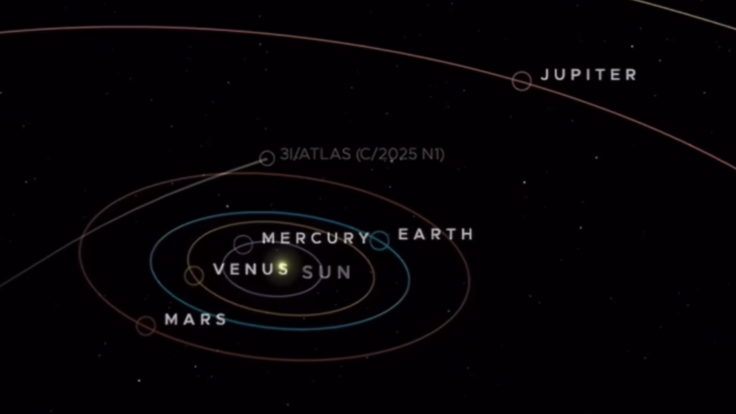3I/ATLAS Did Something No Comet Should Do—Jets Look Intentional

The interstellar object 3I/ATLAS has shocked astronomers by firing off sharply focused jets of material that no ordinary comet is expected to produce.
Newly captured images from observatories including Gemini North, the Nordic Optical Telescope and the James Webb Space Telescope (JWST) show a powerful, sunward-facing jet blasting across hundreds of thousands of kilometres — behaviour experts say is so structured it appears almostintentional.
3I/ATLAS, discovered on 1 July 2025 by the ATLAS survey in Chile, made its closest approach to the Sun on 29 October. Since then, its unusual activity has sparked intense debate about whether unusual composition, internal structure or entirely unknown processes are shaping its 'engine-like' jets.
Directed Jets Observed in 3I/ATLAS
3I/ATLAS is only the third confirmed interstellar object ever observed entering the solar system, following 'Oumuamua and 2I/Borisov. Unlike typical comets, which release gas and dust in diffuse patterns as sunlight heats their surface, 3I/ATLAS has produced highly concentrated, sunward-facing jets.
Imagery from Gemini North shows a sharply defined plume pointing towards the Sun — a configuration seldom seen in known comets. Data from the Nordic Optical Telescope suggests the object survived its solar encounter intact and expelled material across distances of up to 500,000 km.
Public science commentary has begun referring to these emissions as '3I/ATLAS jets', reflecting growing recognition that the behaviour may represent a new category of cometary activity.
🔥 3I/ATLAS Just Did Something No Comet Should Do…
— Astronomy Vibes (@AstronomyVibes) November 17, 2025
Something strange is happening out there… and this latest image sent a chill down my spine.
The new shots of 3I/ATLAS show razor-sharp jets cutting through space like they’re following a plan — not behaving like random… pic.twitter.com/yQUnSW0lxG
Natural Physics or Something More Complex?
Comet jets usually form when sunlight warms volatile ices, causing them to sublimate and erupt through weak points in the surface. But the precision of 3I/ATLAS' jets has prompted fresh questions.
Spectroscopy from the JWST indicates that the comet's coma is dominated by carbon dioxide, with smaller amounts of water ice and carbon monoxide. This combination can produce violent outgassing, but the highly directional plumes suggest either unusual internal channels or structural cavities that funnel gas into focused streams.
While some observers have noted the jets look 'almost engineered', all major observatories maintain that there is no evidence of artificial control or technology. Instead, scientists argue that 3I/ATLAS may reflect extreme comet physics formed under unfamiliar interstellar conditions.
Why the Jets Are Important
Every interstellar visitor offers a rare opportunity to study material formed around distant stars. NASA confirms that 3I/ATLAS follows a hyperbolic trajectory, meaning it is not gravitationally bound to the Sun and originated far beyond our system.
Its sharply defined jets raise questions about:
- whether interstellar comets contain large internal voids,
- how exotic ices respond to intense solar heating, and
- whether unusual compositions can create 'engine-like' outgassing patterns.
These findings may reshape our understanding of cometary physics and highlight the limited knowledge about objects formed in other planetary systems.
A Rare Opportunity for Science
As 3I/ATLAS heads back into deep space, astronomers continue tracking its fading activity. The now-trending buzzword '3I/ATLAS jets' is set to dominate research discussions in the months ahead, underscoring the comet's role as one of the most intriguing interstellar visitors observed to date.
© Copyright IBTimes 2025. All rights reserved.



















